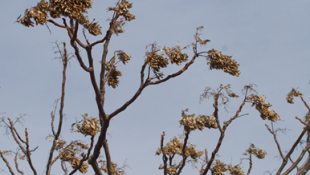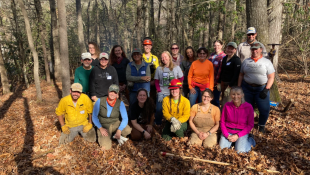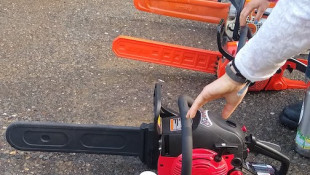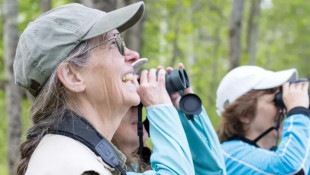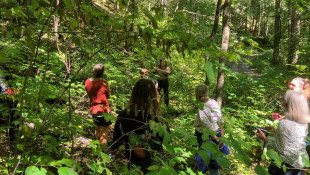Kiera Quigley, National Association of State Foresters summer intern and Fisheries & Wildlife undergrad at Michigan State
Article
By:
Renée E. D’Aoust
My mom called our forestland in northern Idaho a “spot of paradise.” Mom was the first to point out a grand fir that might fall, to see a moose on the pasture, and to notice Western larch needles changing color. She passed away eight years ago, and we try to honor her by caring for our forestland.
Article
By:
Amanda Mahaffey
Ponderosa pine forests of the Southwest are home to the native bark beetle. However, human influence, denser forests, and increased temperatures and drought events have led to recent bark beetle outbreaks that threaten the health of ponderosa stands. Where dead trees stand, fire can move as much as three times more rapidly, creating dangerous conditions for firefighters and residents. Restoration treatments can be used to help restore the balance needed in ponderosa pine ecosystems.
Article
By:
Amanda Mahaffey
What do all these insects have in common? They were all brought to North America from Asia or Europe. These exotic insects have caused havoc in our forests because the trees they attack have developed little resistance to them. Our forests are filled with native insects that attack and sometimes kill trees, but because these insects evolved along with their hosts, they don’t cause complete mortality that non-native species can.
Article
The stream meandered through forests and wetlands like a crystal clear thread. The stream was so clear you could easily see the rocks on the bottom and watch fish glide through the water. I now understand the relationship between healthy forests and streams that provide clean water, wildlife habitat and opportunities to relax and cool your feet on a hot day.
Article
By:
Amanda Mahaffey
Have you seen a box nailed to the side of a building, or on a post in a field, and wondered what it was for? Bats are friends from the forest. Little brown bats, big brown bats, and numerous other species flit about the evening sky, eating insects and playing a role in the forest ecosystem.
Article
By:
Guest author
Kiera Quigley, National Association of State Foresters summer intern and Fisheries & Wildlife undergrad at Michigan State
Article
By:
Renée E. D’Aoust
My mom called our forestland in northern Idaho a “spot of paradise.” Mom was the first to point out a grand fir that might fall, to see a moose on the pasture, and to notice Western larch needles changing color.
Article
By:
Amanda Mahaffey
Ponderosa pine forests of the Southwest are home to the native bark beetle. However, human influence, denser forests, and increased temperatures and drought events have led to recent bark beetle outbreaks that threaten the health of ponderosa stands. Where dead trees stand, fire can move as much as three times more rapidly, creating dangerous conditions for firefighters and residents. Restoration treatments can be used to help restore the balance needed in ponderosa pine ecosystems.
Article
By:
Amanda Mahaffey
What do all these insects have in common? They were all brought to North America from Asia or Europe. These exotic insects have caused havoc in our forests because the trees they attack have developed little resistance to them. Our forests are filled with native insects that attack and sometimes kill trees, but because these insects evolved along with their hosts, they don’t cause complete mortality that non-native species can.
Article
The stream meandered through forests and wetlands like a crystal clear thread. The stream was so clear you could easily see the rocks on the bottom and watch fish glide through the water. I now understand the relationship between healthy forests and streams that provide clean water, wildlife habitat and opportunities to relax and cool your feet on a hot day.
Article
By:
Amanda Mahaffey
Have you seen a box nailed to the side of a building, or on a post in a field, and wondered what it was for? Bats are friends from the forest. Little brown bats, big brown bats, and numerous other species flit about the evening sky, eating insects and playing a role in the forest ecosystem.

